Social Emotional Learning Teaching Resources
Are you on the hunt for social emotional learning activities, printable PDFs, and more to bring SEL to life in your primary lessons this school year? The list of academic benefits of SEL instruction is a mile long, and the Teach Starter teacher team has created a robust collection of social and emotional learning resources made with teachers – and your students — in mind.
We've made planning your social-emotional learning lessons simple with printable SEL worksheets and digital social and emotional activities designed specifically for the needs of primary school students. Each resource in this collection has undergone rigorous review by the expert teachers on our team to make sure you'll be comfortable passing them out in the classroom or sending them home in a student's bag.
Pardon us if we're sharing something you already know (feel free to skip right to the social emotional learning activities!), but if you're new to incorporating SEL into your classroom, you may need a quick refresher! Read on for a guide from our teacher team!
What Is Social-Emotional Learning?
The most common social-emotional learning — or social and emotional learning — definition describes SEL as 'the process through which all young people and adults acquire and apply the knowledge, skills, and attitudes to develop healthy identities, manage emotions and achieve personal and collective goals, feel and show empathy for others, establish and maintain supportive relationships, and make responsible and caring decisions.'
It's a bit of a mouthful, but essentially social and emotional learning covers five core competencies:
- Self-Awareness
- Self-Management
- Social Awareness
- Relationship Skills
- Responsible Decision Making

Where Did Social Emotional Learning Come From?
Teachers have been teaching many of the skills that now fall under the social and emotional learning curriculum for centuries. It's always been our goal to help shape little minds to be caring, productive, and engaged citizens.
But the roots of what we now consider SEL can be traced back to a project in the New Haven, Connecticut schools in the United States where school administrators worked with Yale University researchers, parents, mental health workers and teachers to refocus not just the school's academic programs but their social ones too. The project started in the 1960s at two schools considered 'underperforming,' and by the 1980s, these same schools had academic scores that were at the top of American school rankings.
From there, the K-12 New Haven Social Development program was born, establishing a framework for incorporating social and emotional learning into the curriculum. Meanwhile, the non-profit Collaborative for Academic, Social, and Emotional Learning (CASEL) was born in 1994, helping to really bring the term 'social and emotional learning' into the zeitgeist.
CASEL was born out of the New Haven projects and helped shape the official definition of SEL listed above in 1997. It now works to expand SEL in schools around the globe.
Why Is Social-Emotional Learning Important?
Not sure you have time to fit all of this in alongside the standards that you're preparing students to meet? A solid social and emotional learning curriculum will help students with everything from managing emotions and developing coping skills to setting positive goals, engaging in positive relationships and solving problems effectively — all important competencies for your classroom.
The importance of SEL is hard to overstate, but here are a few core benefits:
- Promote mental health and well-being — Teaching social and emotional lessons in the classroom can help students develop the skills they need to manage their emotions, build positive relationships and cope with stress and challenges. It's a small step toward better mental health for all.
- Improve academic performance — There's strong research showing that students who have strong social and emotional skills are more likely to be engaged in learning and perform better academically.
- Create a positive classroom culture — Teaching social and emotional lessons can help create the kind of classroom culture where students feel safe, respected and supported — exactly what we all strive for!
- Prepare students for life after school — Social and emotional skills are essential for success beyond the classroom, be it at home in the immediate future or in uni or the workforce. Teaching these skills helps students be better equipped to handle the challenges they will face.
- Address specific social and emotional needs — Teaching social and emotional lessons can help address students' specific needs, such as building self-esteem, managing emotions and developing empathy for others. This can also help to create a more inclusive and equitable classroom where all students feel respected and valued. It's also good for your overall classroom management.

How to Teach Social and Emotional Lessons
There's little question that there's value in social and emotional learning, but how do you actually teach it? There's no simple answer here, as the exact methodology will differ based on year level, individual student needs and even your classroom dynamics!
That said, here are some strategies from our teacher team to keep in mind as you consider how you're incorporating the components of SEL in your instruction:
- Modelling — This is likely no surprise — we are our students' role models in the classroom for so much. Don't underestimate the value of your own active listening, displays of empathy and self-regulation, and other skills that are essential for your students' social and emotional development.
- Classroom Culture — Establishing a safe and supportive learning environment where students feel respected, valued and empowered goes a long way. Fostering a sense of community, promoting positive communication and encouraging collaboration and teamwork are all helping kids build their SEL quotient!
- Integration — Of course, you can (and should) have explicit instruction on SEL, but you can also incorporate SEL concepts into your core subject lessons. Discuss emotions related to a character in a book or working on group projects that require collaboration and communication. If you're teaching maths, emphasise the importance of perseverance and problem-solving skills. Teaching HAAS? Discuss empathy and the ability to understand different perspectives. It all comes together!
- Plus Plan
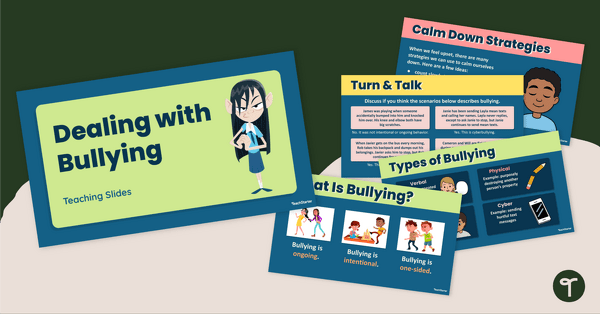
Dealing with Bullying Teaching Slides
Teach your students about bullying and how to deal with it with this comprehensive teaching presentation.
- Plus Plan
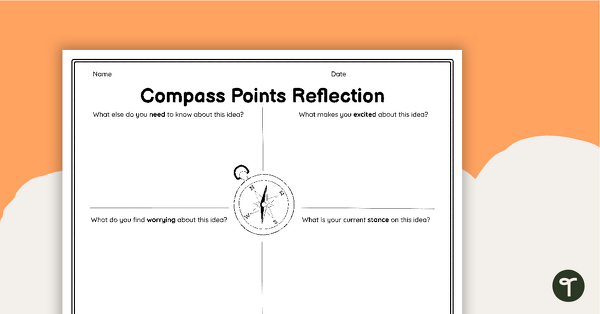
Reflection Activity - Compass Points
Use this template to assist students in recording their reflections and responses to information from fiction and non-fiction texts and media sources.
- Plus Plan
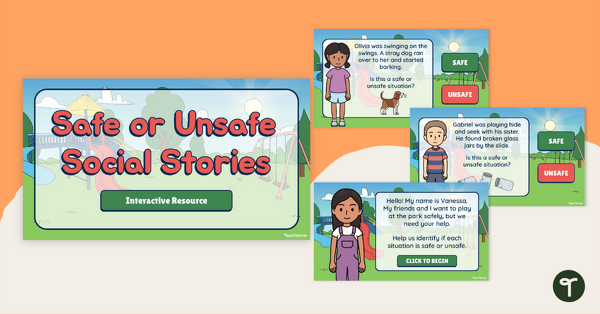
Safe or Unsafe Social Stories Interactive Activity
Discuss safe and unsafe scenarios with this interactive activity.
- Plus Plan
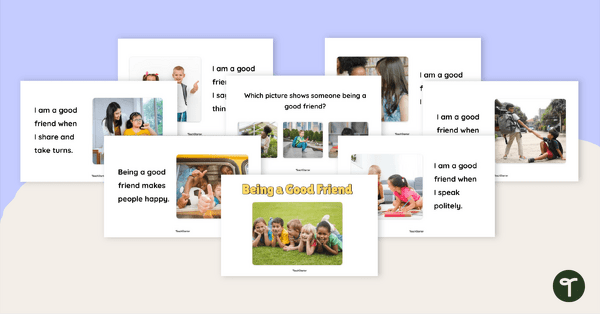
Being a Good Friend – Mini-Book
A social story to develop social skills for being a good friend.
- Plus Plan
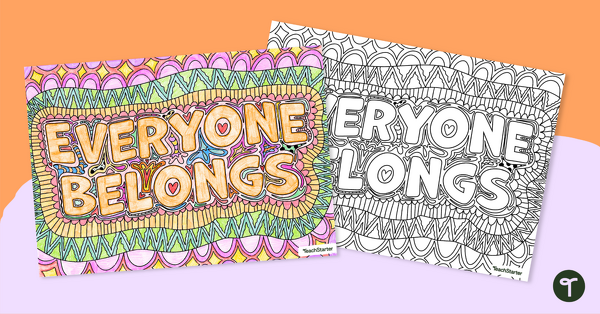
Everyone Belongs Mindful Colouring Page
Decorate your classroom or school with these colouring pages for Harmony Day.
- Free Plan
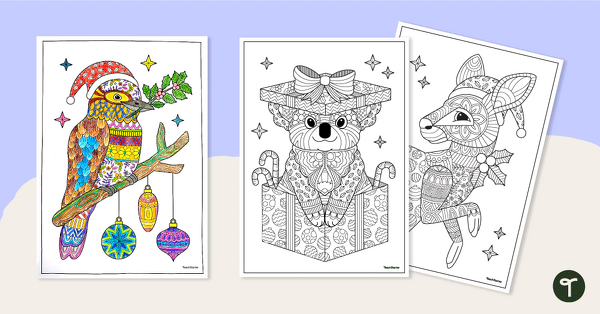
Australian Animals Christmas Mindful Colouring Pages
Bring an Aussie animal Christmas theme into the classroom with these printable mindful colouring pages.
- Free Plan
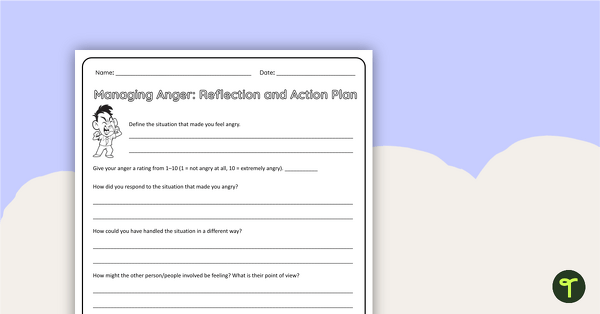
Managing Anger Worksheet (Upper Primary)
Help older students identify and manage angry feelings with this self-reflection and action plan worksheet.
- Free Plan
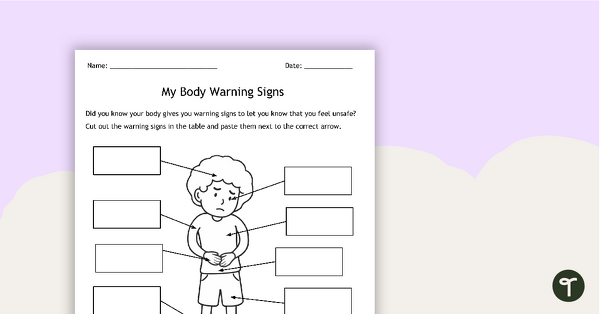
My Body Warning Signs - Worksheet
Help students identify the body signs that indicate they are feeling unsafe with this cut and paste worksheet.
- Plus Plan
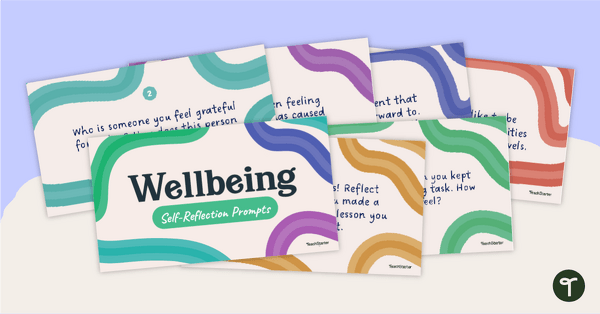
Wellbeing Self-Reflection Prompts PowerPoint
Make mental wellness check-ins a regular part of your day with our collection of 50 student self-reflection prompts.
- Free Plan
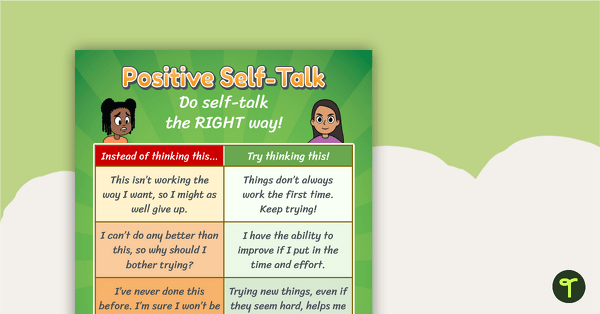
Positive Self-Talk Poster
Encourage your students to use positive self-talk on a daily basis with this motivational classroom poster.
- Plus Plan
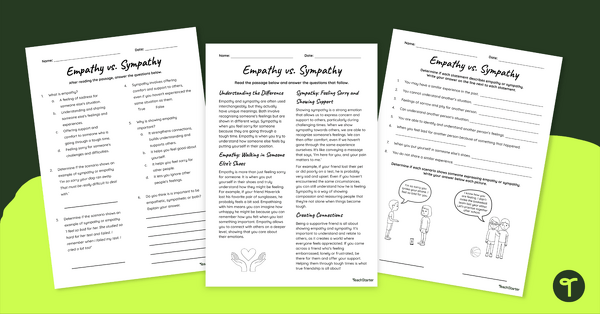
Empathy vs. Sympathy Reading Comprehension Worksheet
Challenge your students to learn the differences between empathy and sympathy with this reading comprehension worksheet.
- Plus Plan
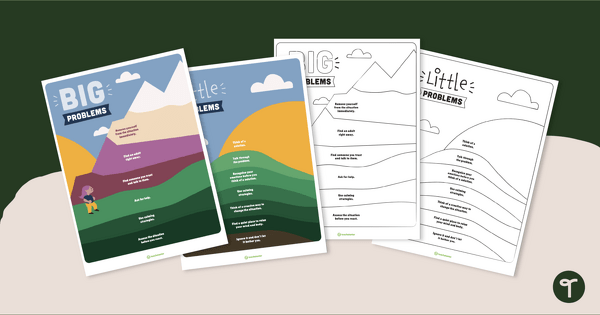
Big Problem, Little Problem Posters
Show different strategies for identifying and solving big problems and little problems with printable posters.
- Plus Plan
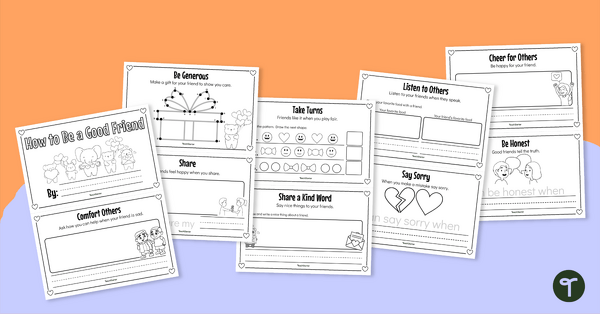
How to Be a Good Friend – Mini-Book
Encourage students to build relationships by learning how to be a good friend with this printable mini-book.
- Free Plan
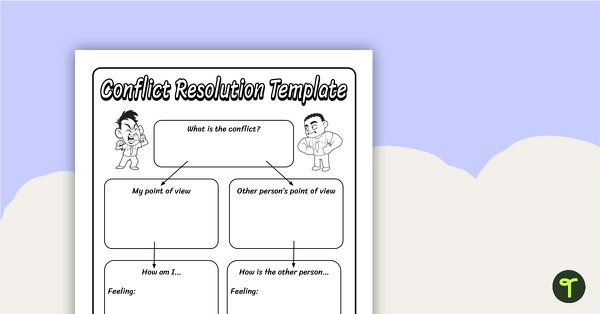
Conflict Resolution Template
Manage classroom and playground conflicts positively and proactively with this conflict resolution template.
- Free Plan
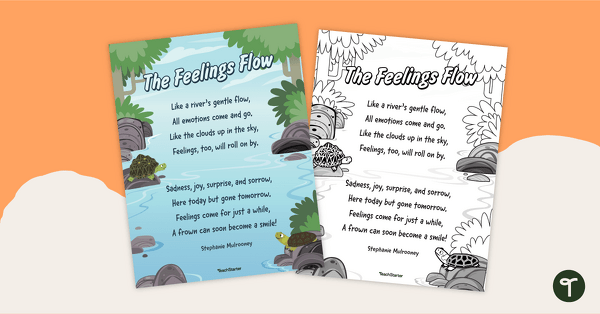
The Feelings Flow - Poster
Help students understand the transient nature of emotions with this simple poem about feelings.
- Plus Plan
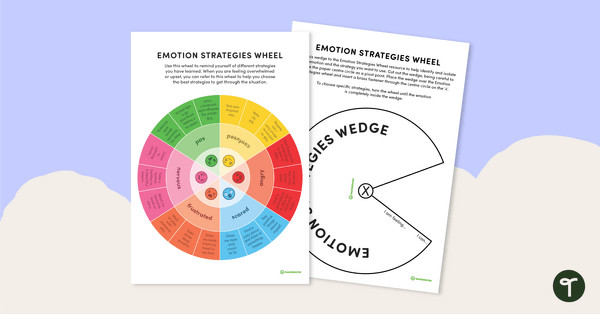
Emotion Strategies Wheel
Help your students self-regulate when they experience 'big' emotions with this hands-on emotions wheel with accompanying calming strategies.
- Plus Plan
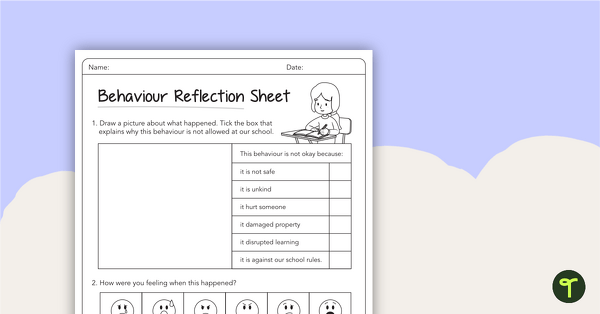
Behaviour Reflection Sheet (Lower Primary)
Get your young students to reflect on their behaviours with this reflection worksheet.
- Plus Plan
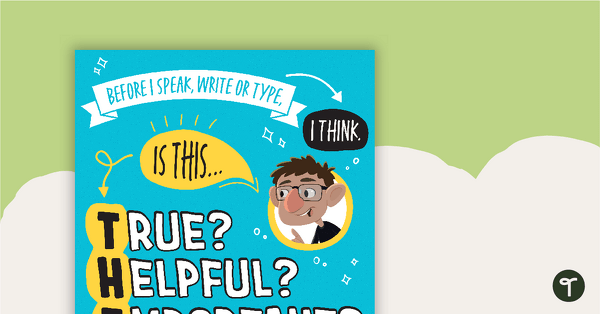
THINK Strategy Poster
A poster explaining the THINK strategy.
- Free Plan
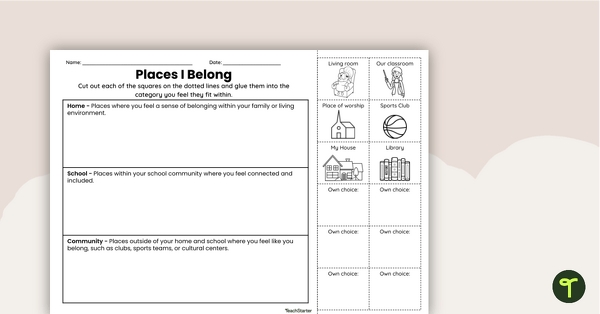
Places I Belong Cut-and-Paste Worksheet
Encourage students to think of the different places they feel a sense of belonging at school and in the home environment.
- Plus Plan
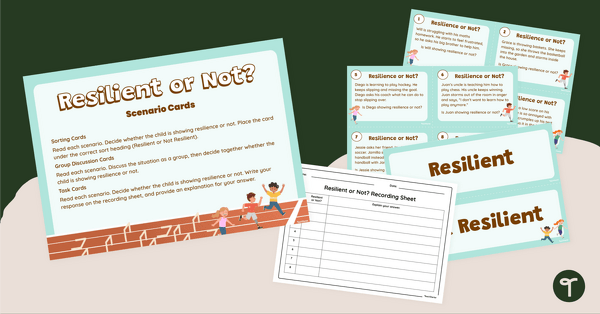
Resilience or Not? Scenario Task Cards
Get students to explore real-life examples of resilience with this set of 16 scenario cards perfect for developing students' social-emotional skills.
- Plus Plan
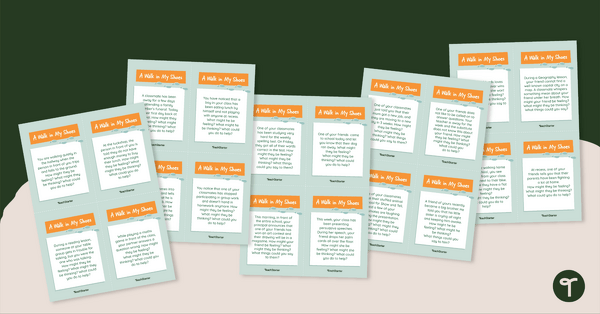
A Walk in My Shoes – Empathy Task Cards
Use these empathy scenario cards with your students when teaching them about social awareness.
- Plus Plan
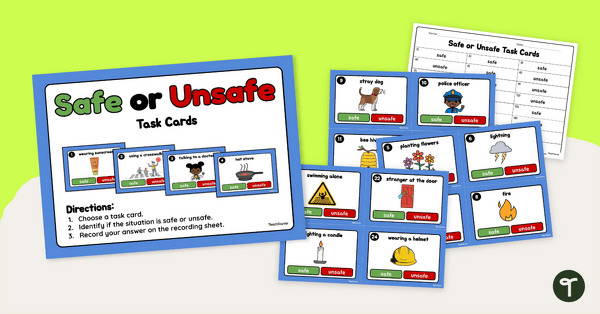
Is It Safe or Unsafe? Task Cards
Explore safe and unsafe situations with this set of task cards.
- Plus Plan
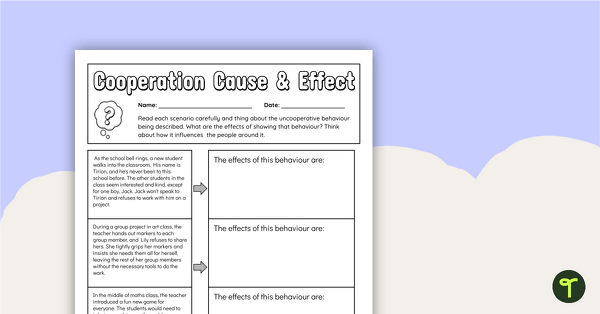
Cooperation Cause and Effect Worksheet
Discover the effects of uncooperative behaviour with a cause-and-effect worksheet.
- Plus Plan
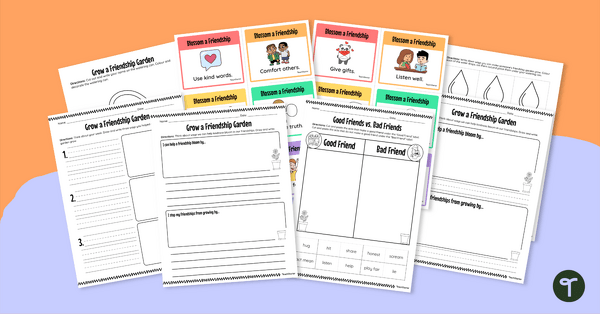
Grow a Friendship Garden – Friendship Activities
Encourage students to make a friendship garden grow with this activity bundle that includes friendship worksheets, writing templates, craft templates and scenario cards.
- Free Plan
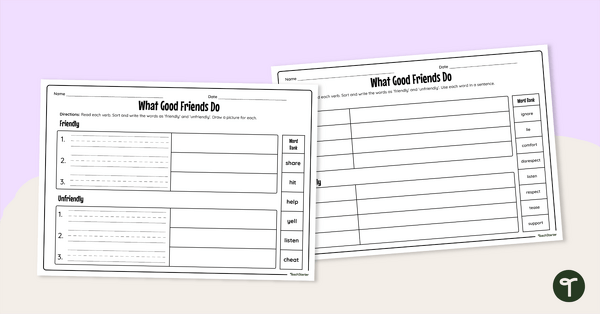
What Good Friends Do – Differentiated Friendship Worksheets
Sort verbs according to if they are friendly or unfriendly interactions with this friendship worksheet.
- Plus Plan
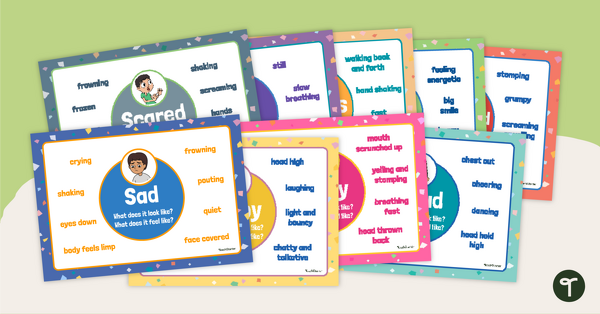
Characteristics of Emotions - Posters
Help students learn the facial expressions and body cues that accompany the most common emotional states with this set of classroom display posters.
- Free Plan
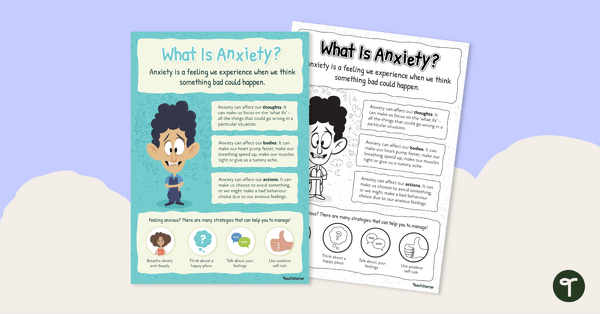
What Is Anxiety? Poster
Teach your students to understand and manage anxious feelings with this informative classroom display poster.
- Plus Plan
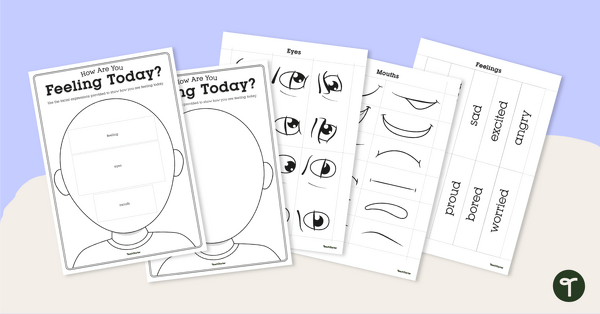
Emotional Awareness Face Template
Teach your students emotional awareness with this customisable face template perfect for lessons focused on social-emotional learning.
- Plus Plan
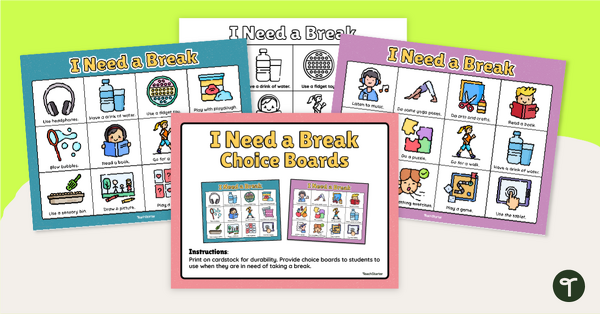
I Need a Break - Choice Boards
Help upset students regulate their emotions in the classroom with our printable ‘I Need a Break!’ choice boards.
- Free Plan
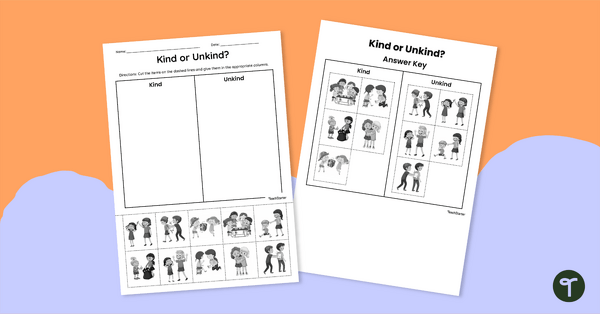
Kind or Unkind Cut-and-Paste Worksheet
Explore kind and unkind scenarios with your students using this engaging cut-and-paste worksheet.
- Free Plan
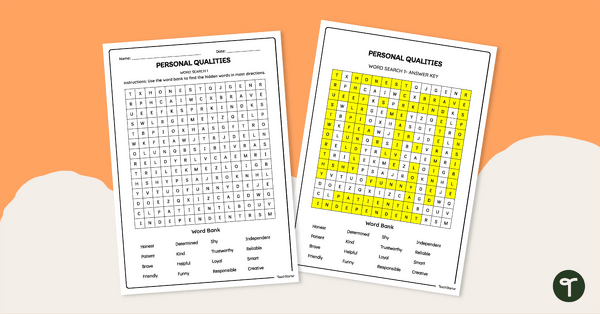
Personal Qualities Word Search
Explore different personal qualities with your students with this printable personal qualities word search.
- Plus Plan
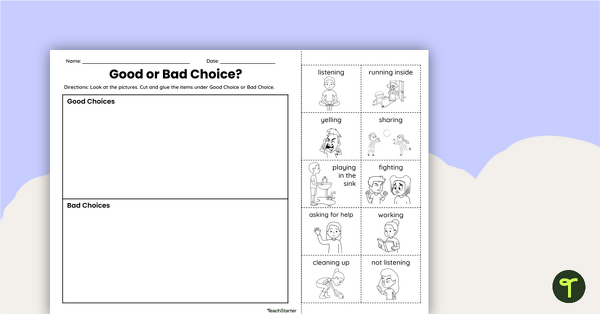
Good Choice or Bad Choice? Worksheet
Help your students differentiate between good and bad behaviour choices with a cut-and-paste worksheet.